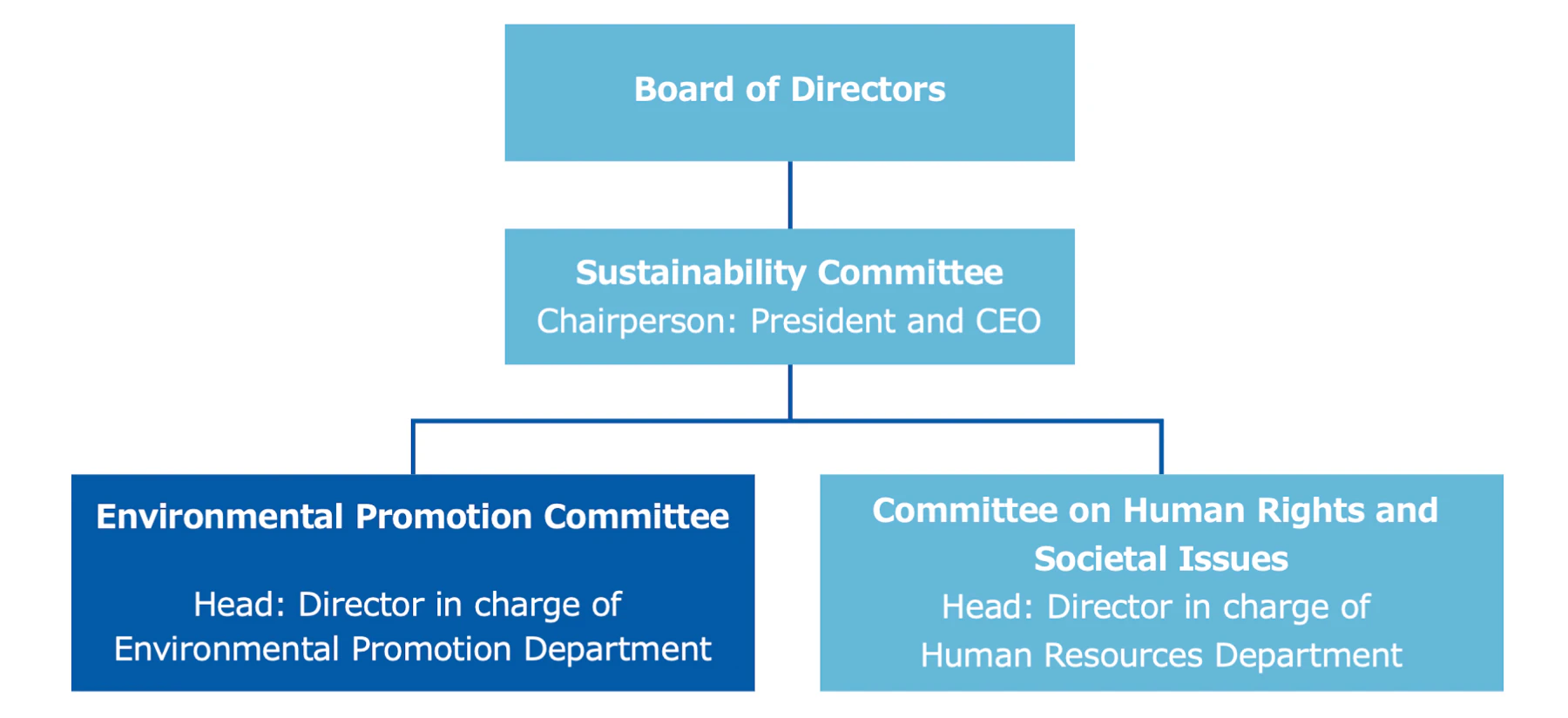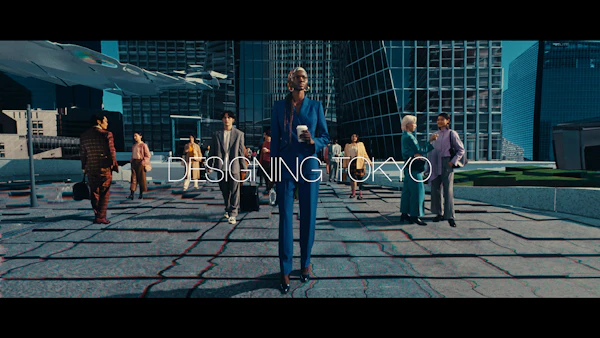Environmental Policy and System
環境方針・体制
Environmental Philosophy and Policies
Environmental Philosophy
The Mori Building group contributes to the realization of a more sustainable society leading to the future by promoting "harmonious coexistence of cities and nature," "decarbonized cities," and "resource recycling" through urban development which is idealized as Vertical Garden City, and its operation.
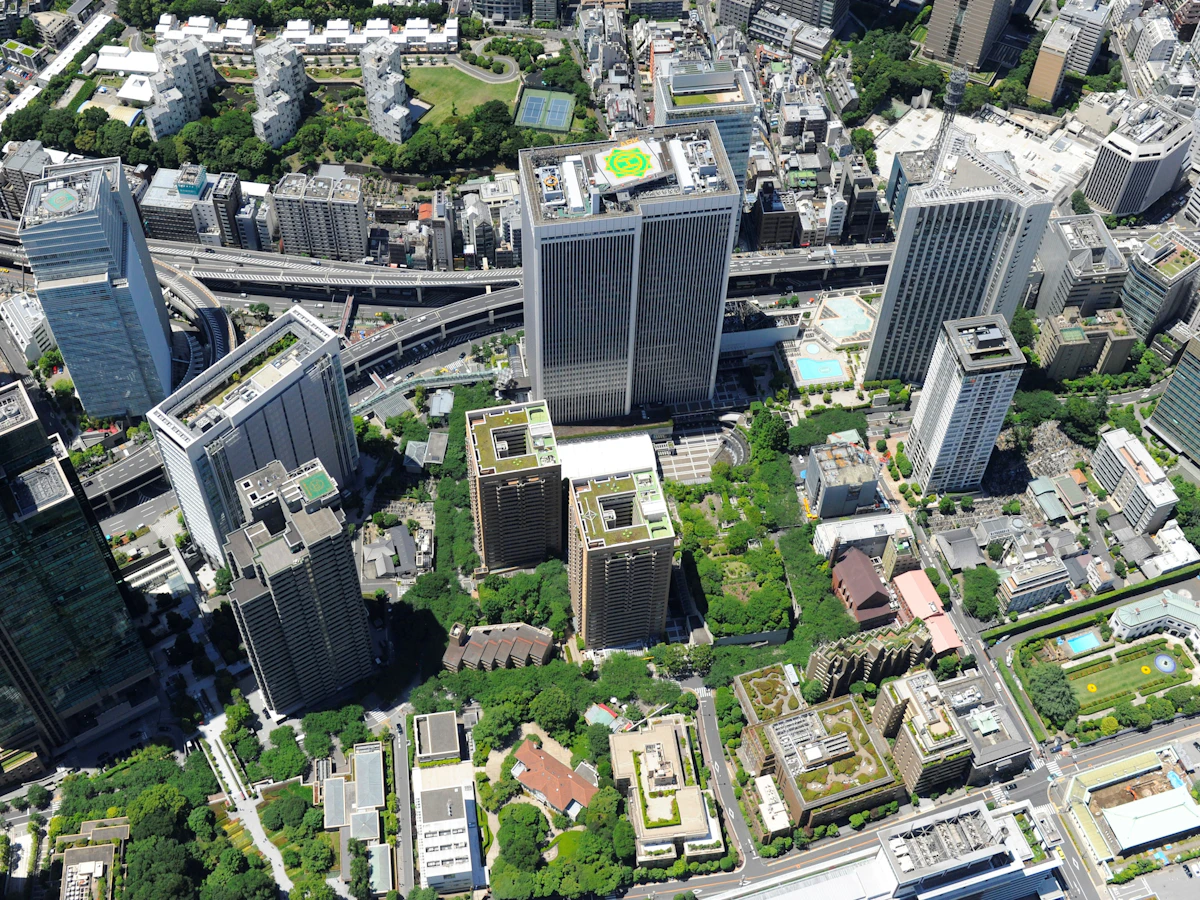
ARK Hills
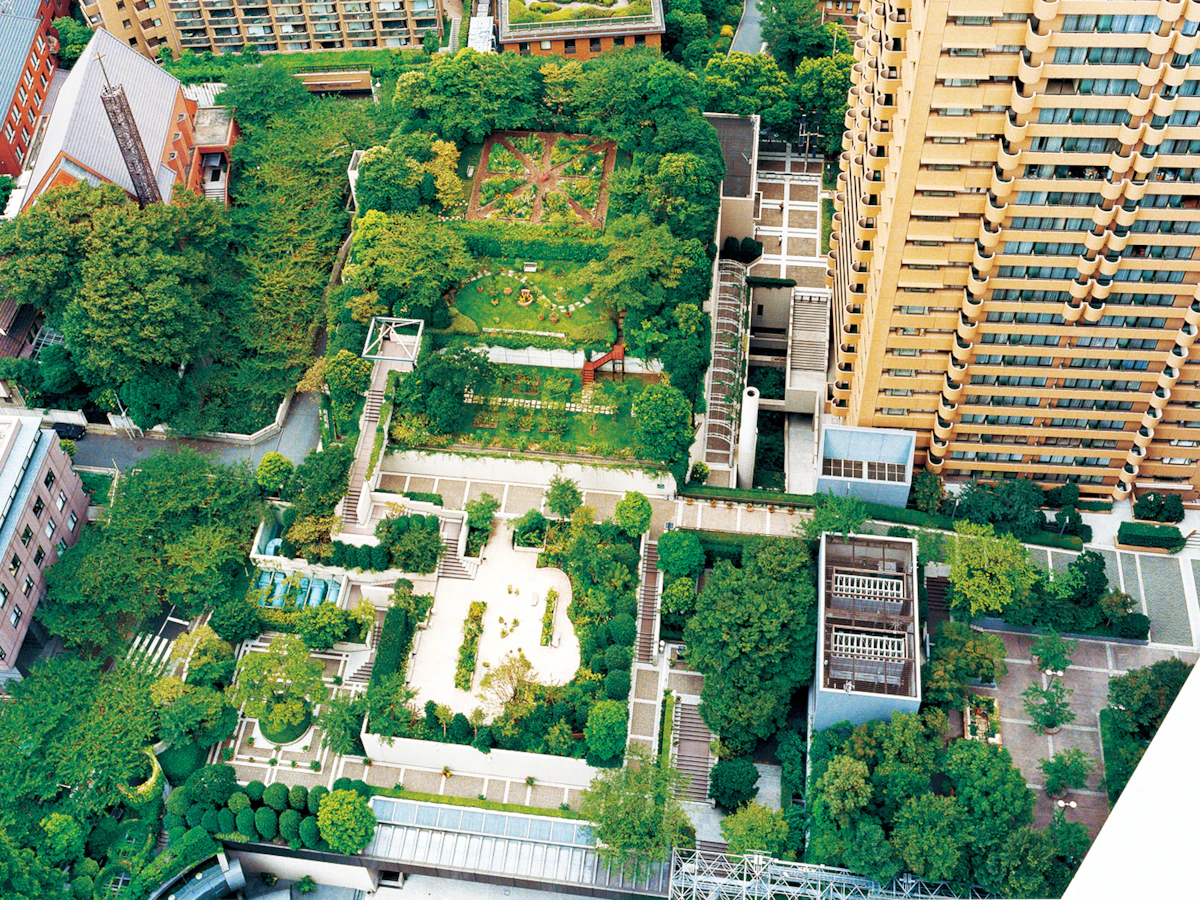
ARK Hills "ARK Garden"
Environmental Policies
Harmonious Coexistence of Cities and Nature
We create pockets of nature with consideration of biodiversity on the earth's surface and rooftops for achieving harmonious coexistence of cities and nature using verticality. Along with various urban activities, it creates a space with lush greenery where you can hear the birds singing and insects buzzing. The space is used for fostering a community of people.
Decarbonized Cities
By adopting highly energy-efficient systems in a compact city that combines various urban functions vertically, we will realize an environmentally efficient city. Through our comprehensive, high-quality city management systems, rigorous energy conservation, and use of renewable energy, we will promote urban decarbonization.
Resource Recycling
From construction to day-to-day operations, we constantly deploy pollution control measures and work with various people to reduce, reuse, and recycle waste efficiently. Through the establishment of systems and services that encourage these activities, we will promote transition to a circular economy that uses resources in a sustainable manner and aim to create resource recycling-oriented cities.
Regulatory Compliance and Environmental Management
We comply with all environmental-related laws and regulations, as well as establish and maintain environmental management systems to continuously enhance our environmental promotion activities.
Environmental Information Disclosure
We work to communicate with the general public by disclosing information on the Mori Building group's environmental philosophy, policies, activities, etc.
Environmental Education and Awareness-raising Activities
We conduct environmental education and awareness-raising activities for our employees to increase the effectiveness of our environmental promotion initiatives. In addition, we also conduct environmental awareness-raising activities for users through our facilities.
Relationship Between Vertical Garden City and Environment
Vertical Garden City is Our Solution for Urban Environmental Issues
"Vertical Garden City" is a compact complex that vertically layers diverse urban functions including work, residence/living, recreation, commercial/retail, education, relaxation, entertainment, culture and social interaction, which are all within walking distance.
By aggregating subdivided plots of land and providing high-rise buildings, the construction area above ground is kept to a minimum, resulting in wide open spaces open to people and nature. This not only enables to grow urban nature and to realize life with the four seasons, but also mitigates the urban heat island phenomenon by covering ground surfaces and rooftops with greenery.
The concentration of various urban functions also help to level energy demands and improve energy efficiency. A compact city featuring close proximity of work and residence makes it possible to greatly reduce the time and energy required for commuting to work or school. It also improves efficiency of recycling and logistics. Furthermore, such intelligent utilization of urban centers helps to preserve the nature in suburbs.
Vertical Garden City is a new urban model aiming for the harmonious coexistence of humans and nature while reducing impact on the global environment.
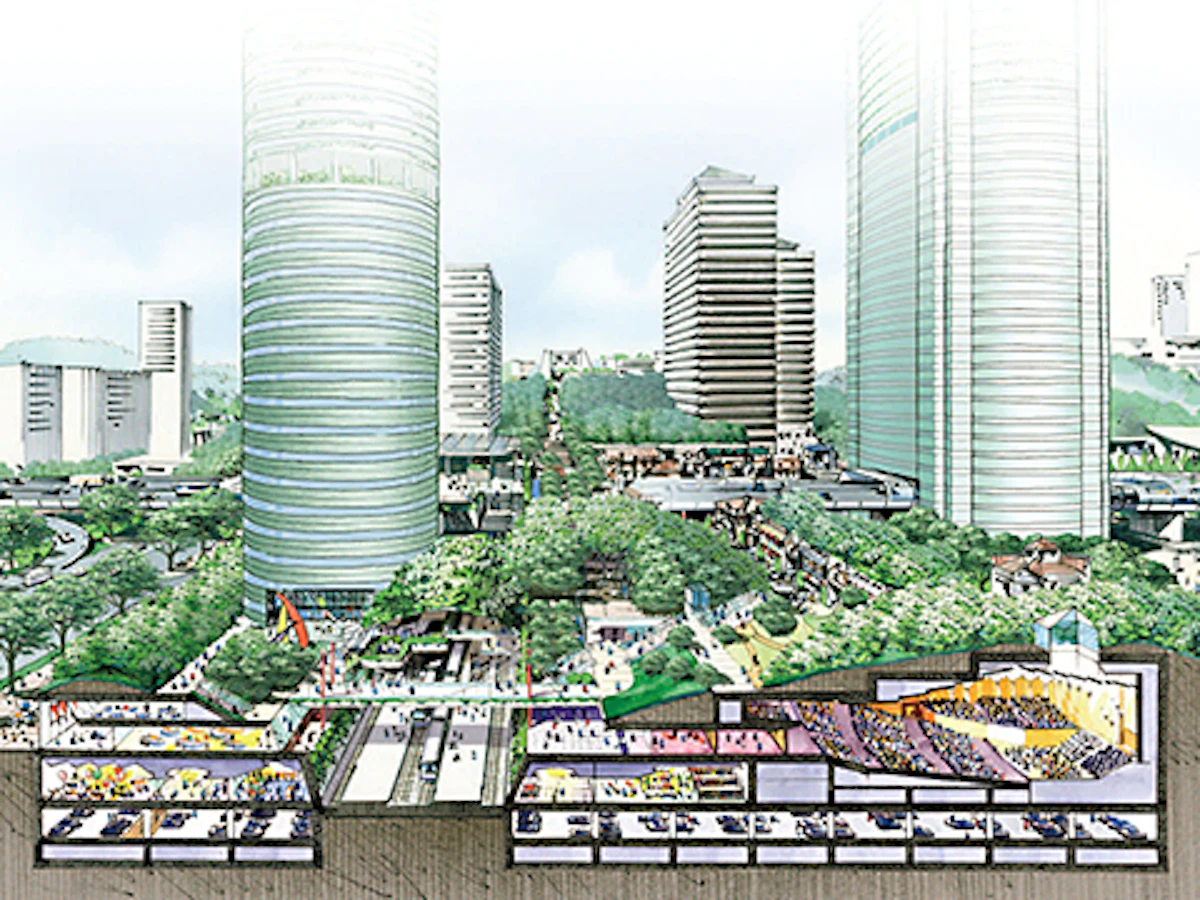
mage of "Vertical Garden City"
Three Environmental Benefits of the Vertical Garden City
The following simulation compares two urban models in terms of their beneficial effects on urban environments.
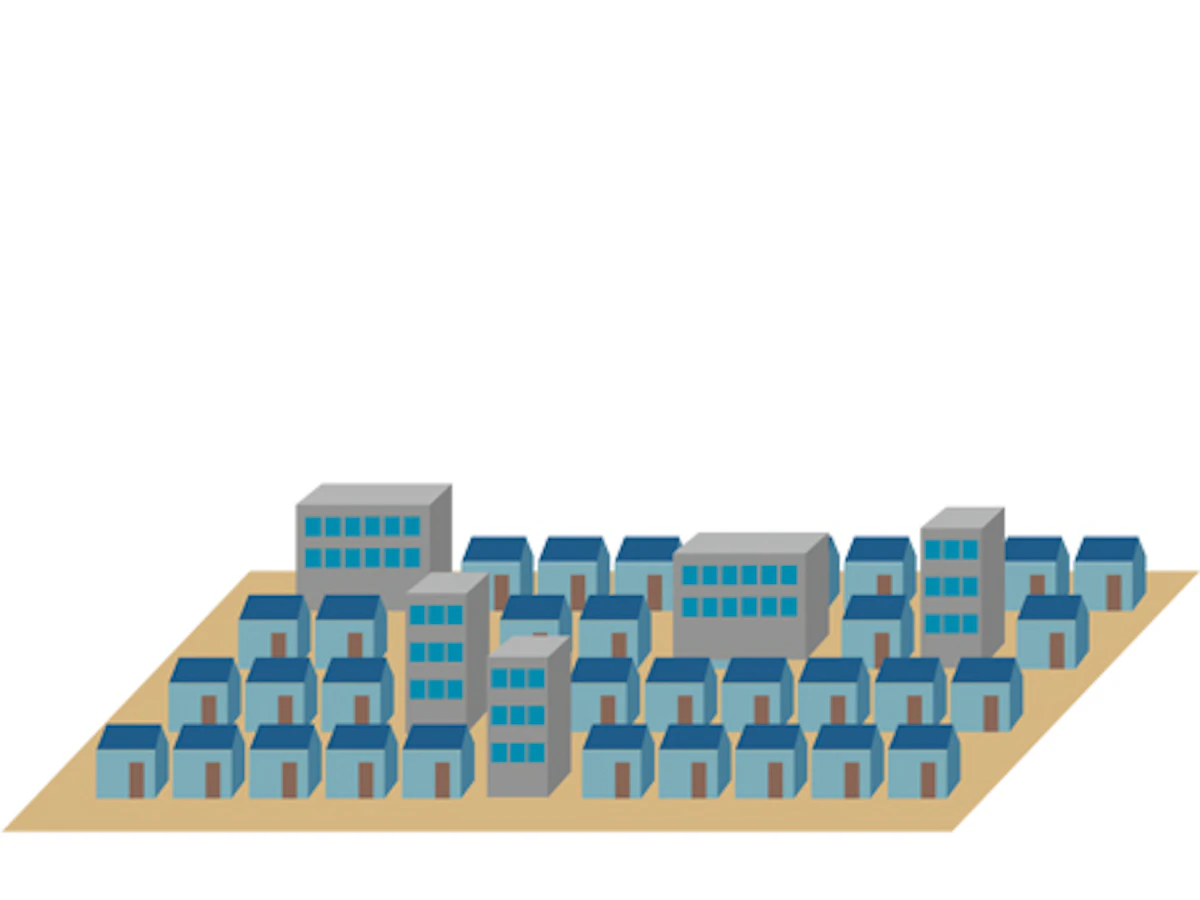
Urban Area Model A
A planar congestion model where city blocks are subdivided and small buildings are densely lined.
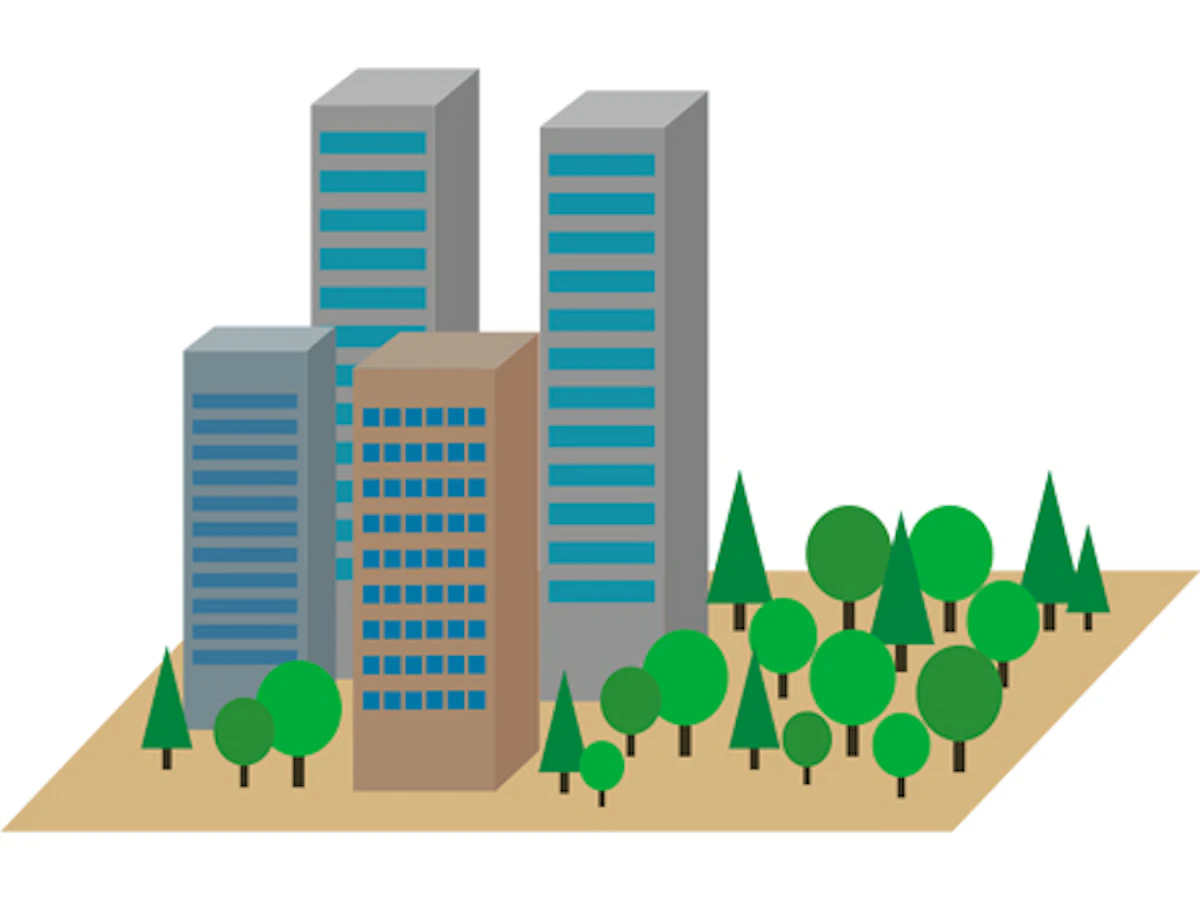
Urban Area Model B (Vertical Garden City)
A model of large, aggregated city blocks with high-rise buildings and adequate open spaces.
- Harmonious coexistence of cities and nature
Compared to the urban area A, the urban area B features large scale green areas in the open spaces created. The green coverage ratio, which indicates the ratio of green area to site area, is approximately 10% in the urban area A, while it is expected to increase to approximately 40% in the urban area B. - Decarbonized cities
In the comparison of energy performance, in the urban area B, the large scale and complex use of facilities make it possible to incorporate various energy efficiency functions such as high-efficiency equipment and regional energy use. As a result, the urban area B reduces primary energy* consumption by approximately 40% in contrast with the urban area A, which has a limited use of energy-saving methods.- Primary Energy: natural energy sources such as fossil fuels, nuclear fuels, hydroelectric and solar power
- Resource recycling
In the urban area B, the durability life of buildings is longer, and it can be maintained and managed in a long-term and integrated manner, so saving resources is feasible over its life cycle. In addition, by using the compactness of the urban structure, it can efficiently collect waste, reuse rain water, and gray water over a wide area.
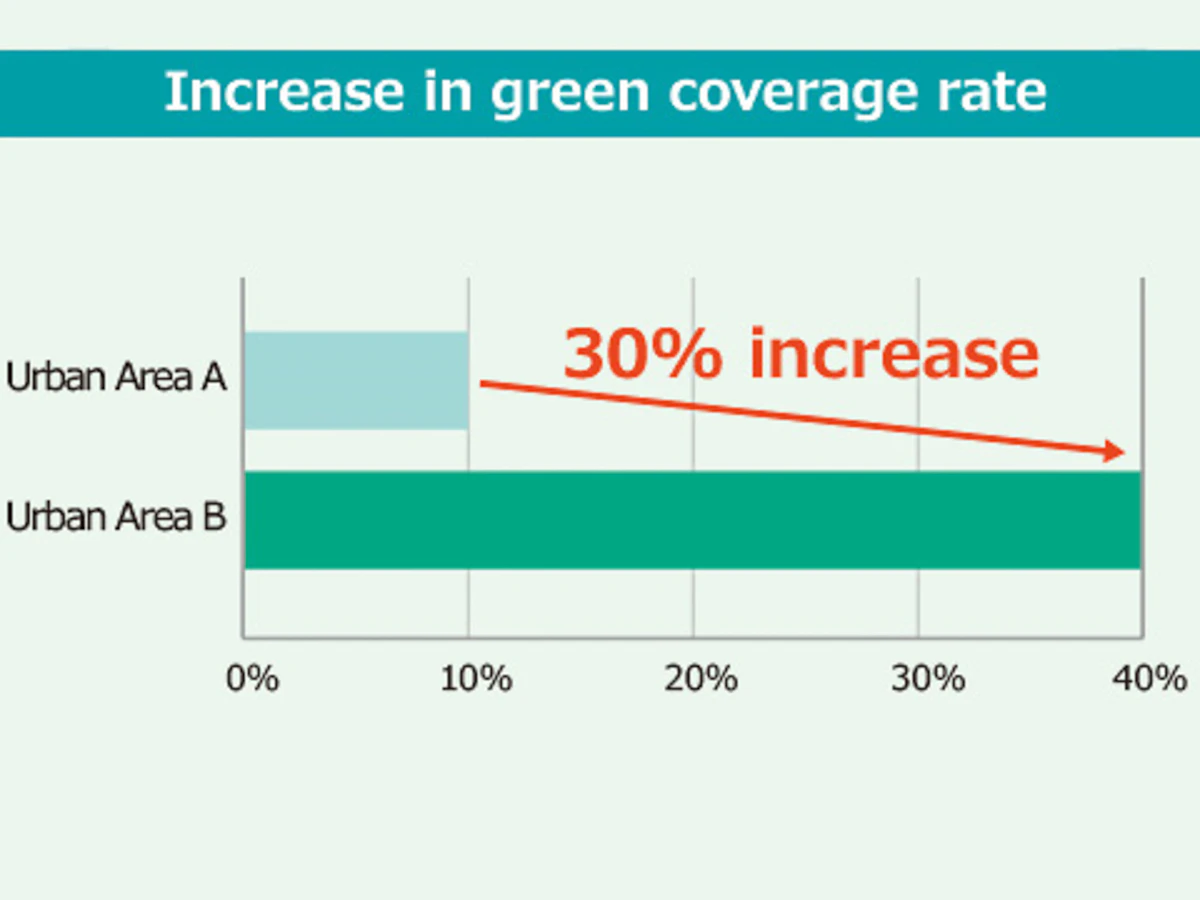
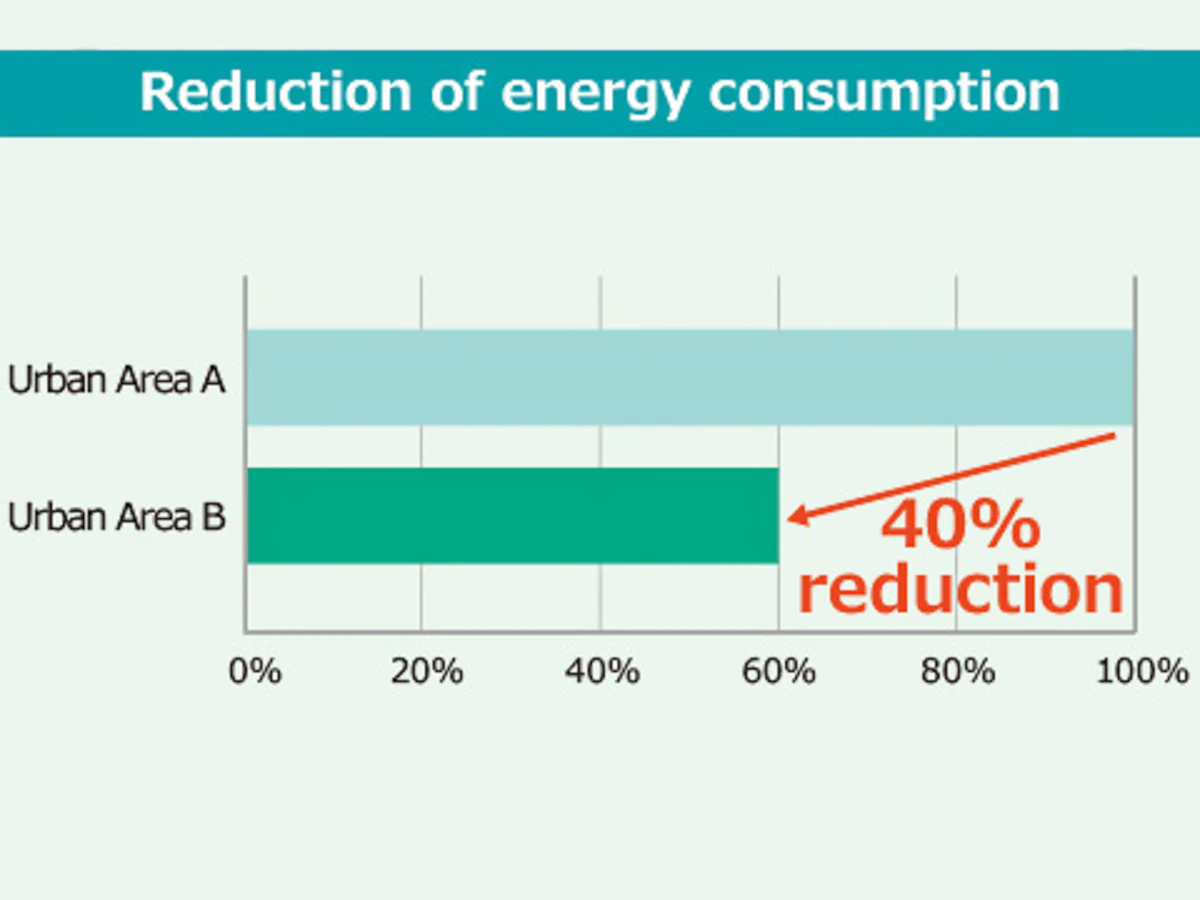
Environmental Promotion System
Mori Building has established the Sustainability Committee chaired by the President and CEO and its administrative office, the Sustainability Committee Secretariat to further promote sustainability-related initiatives. We also have organized the Environmental Promotion Committee and the Committee on Human Rights and Societal Issues as their subcommittees.
The Environmental Promotion Committee(Chair person: the director in charge of Environmental Promotion Department)implements the promotion and management of initiatives related measures for a wide range of environmental issues, including climate change as well as report and submit proposals to the Sustainability Committee as necessary. The Environmental Promotion Department plays a leading role in implementing the initiatives of the Environmental Promotion Committee in cooperation with related departments and promotes company-wide initiatives.
The Board of Directors supervises and receives reports from the Sustainability Committee. Relevant matters and items of significance are submitted to the Board of Directors as necessary.
In terms of risks of climate change, the Sustainability Committee evaluates the impact, and as to material risks, the Risk Management Committee deals with the impact on our business activities, and resolving of issues through the company's core business.
Environmental Promotion System Chart
